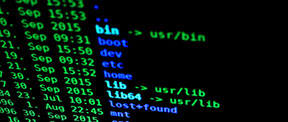**Locate: Find Files and Directory Instantly**
In the vast expanse of a Linux system, finding a specific file or directory can be a time-consuming task, especially when you’re not sure where it’s located. This is where the `locate` command comes in.
**Purpose and Usage:**
`locate` is a powerful command that allows you to search for files and directories in a system-wide database, providing lightning-fast results. The database is automatically updated by the `updatedb` command, which scans the entire filesystem and creates an index of all files and directories.
To use `locate`, simply type the command followed by the filename or partial filename you’re looking for. For example:
“`
$ locate myfile.txt
“`
This will return all files with the name “myfile.txt” in the system.
**Example Uses:**
* Find a specific file in a large directory structure.
* Locate configuration files for a particular application.
* Identify files that contain a specific keyword.
* Search for files created or modified within a specific date range.
**Advanced Options:**
`locate` offers several advanced options to refine your search criteria:
* **-r:** Recursively search subdirectories.
* **-f:** Ignore files that are case-sensitive.
* **-i:** Ignore files that are binary.
* **-l:** Limit the number of results displayed.
* **-n:** Print the relative path of the file or directory.
**Tips:**
* Use tab completion to automatically complete partial filenames.
* Search for multiple files or directories by separating them with spaces.
* Use the `-t` option to print the type of each result (file, directory, etc.).
* The `updatedb` command can be manually invoked to update the locate database.
**Conclusion:**
The `locate` command is an indispensable tool for quickly and efficiently finding files and directories in Linux systems. Its lightning-fast search capabilities and advanced options make it a valuable asset for both beginners and experienced users alike.
